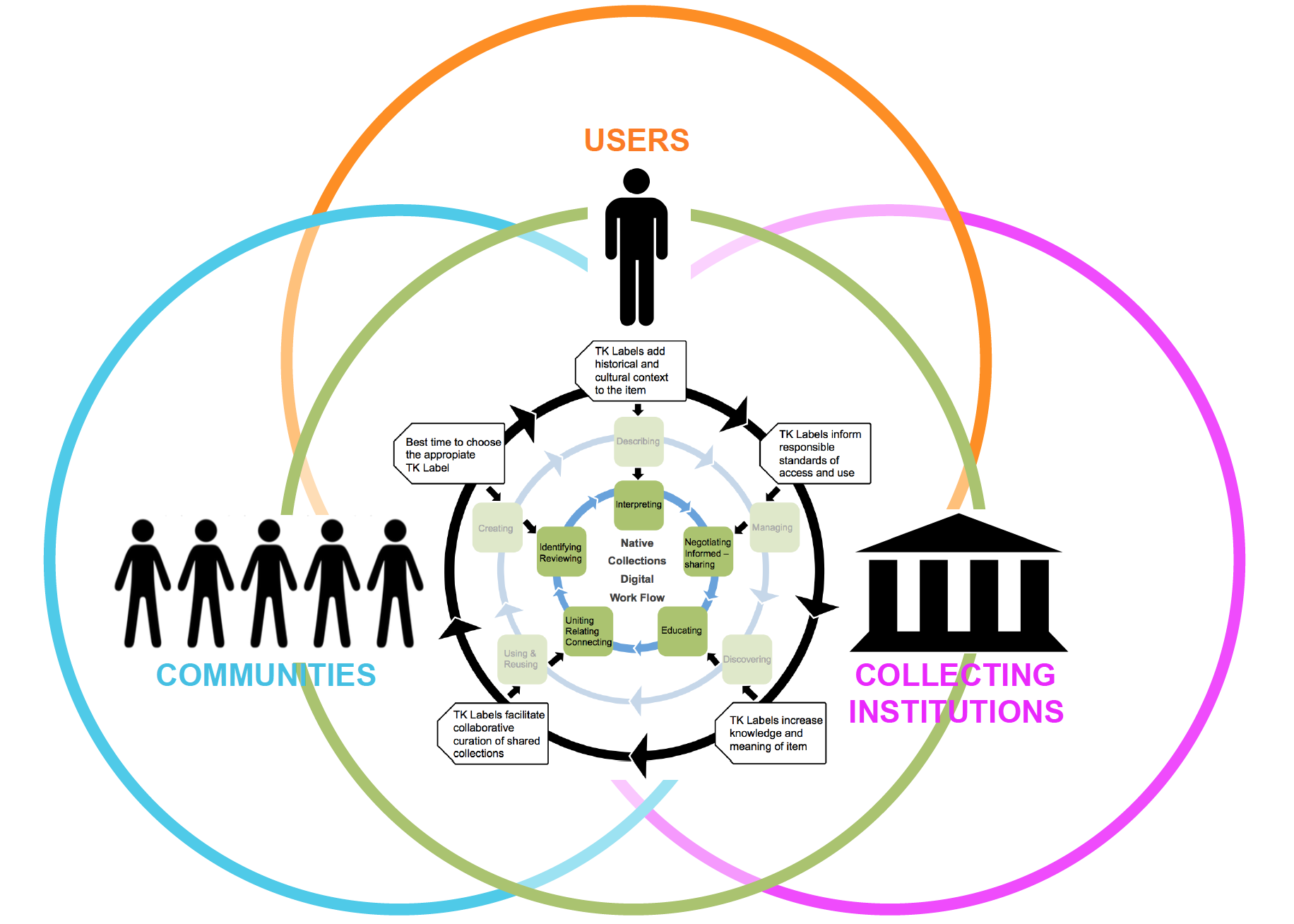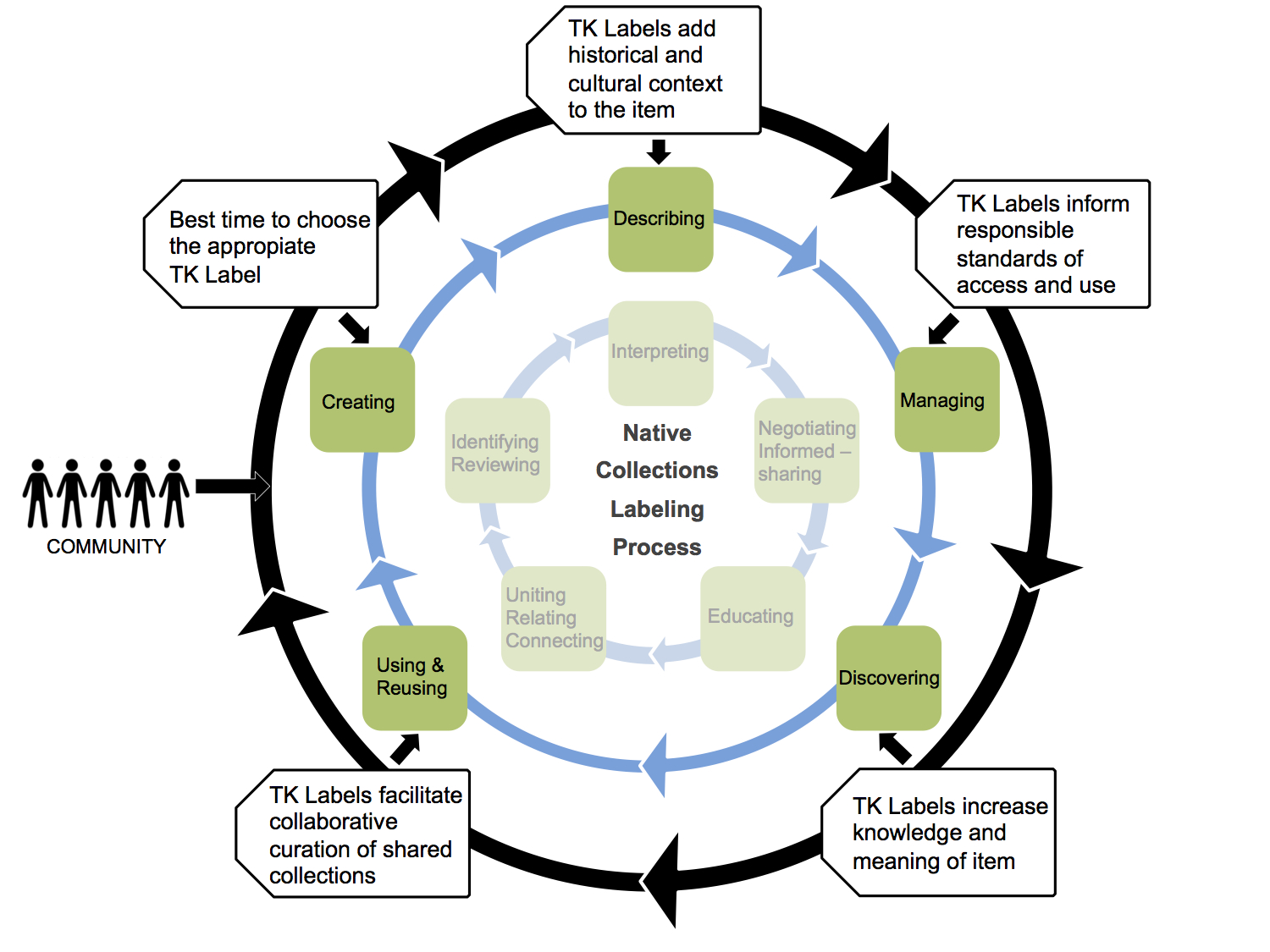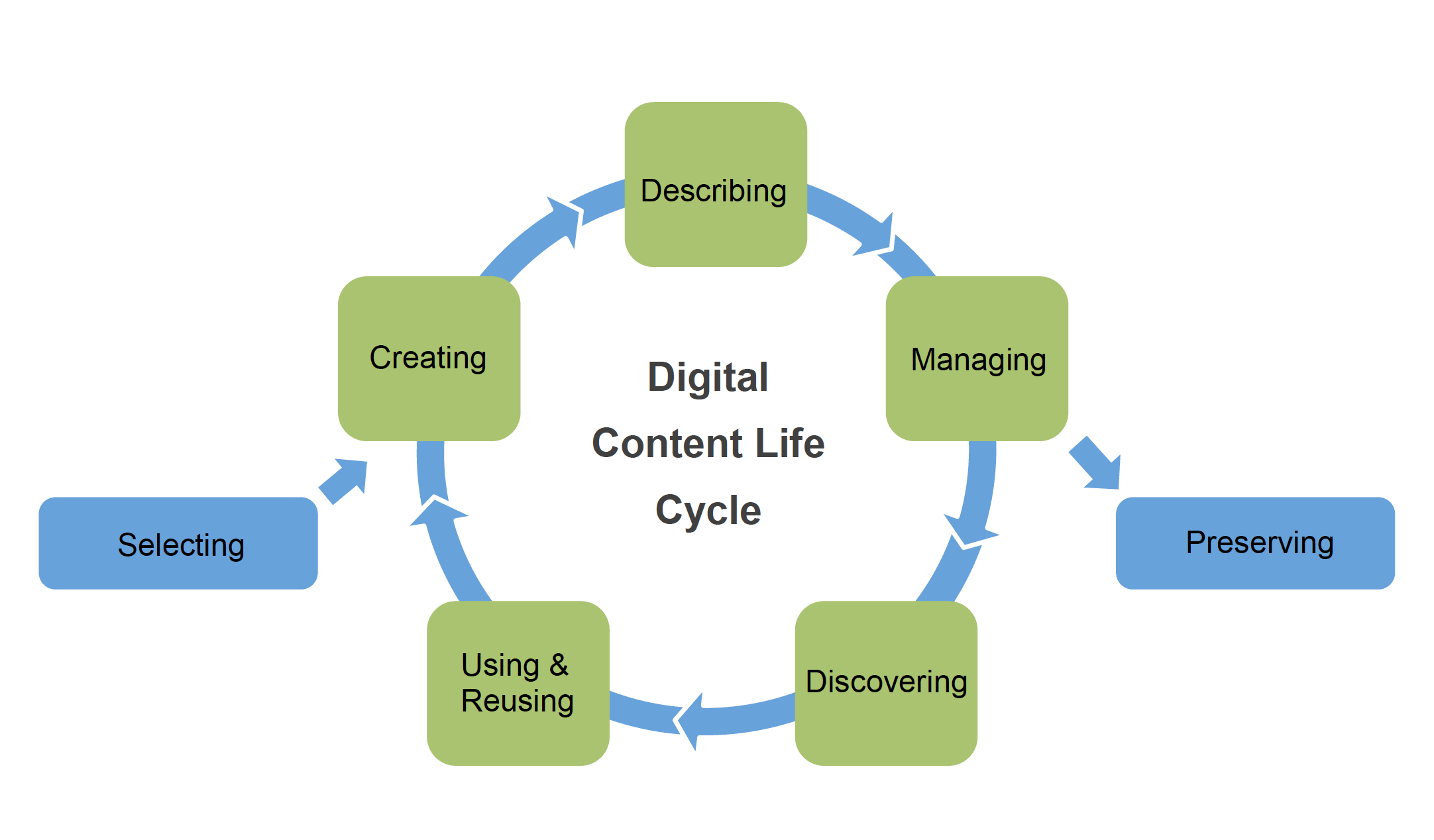


Reciprocal Curation Workflow

TK Labeling




Through the TK Labels, Local Contexts is working to develop an alternative model of cultural curatorial workflows for Native American, First Nation, Metis, Inuit, Aboriginal and Indigenous collections of cultural heritage. These workflows offer new curatorial and collaborative models that address the unique problem of public domain materials and third party owned content that is divorced from local communities and missing rich narration, attribution and curation. Below is a general visualization of our alternative workflow and how it might begin to set new standards – from gathering content, to vetting, to customization, to catalog location – for the diversity of collecting institutions and tribal archives, libraries and museums. We are currently working with a variety of institutions to identify what their unique workflow will look like, and we will be sharing these over the coming year. As each institution is different, we will have a variety of workflow models that come out of smaller and larger institutions.
Our first workflow will be the one we have developed with the American Folklife Center at the Library of Congress for their work labeling, interpreting and repositioning the cultural authority over the first sound recordings of Native America ever made: the 27 Passamaquoddy cylinder sound recordings made in Calais Maine in March 1890.
See below to learn more:



